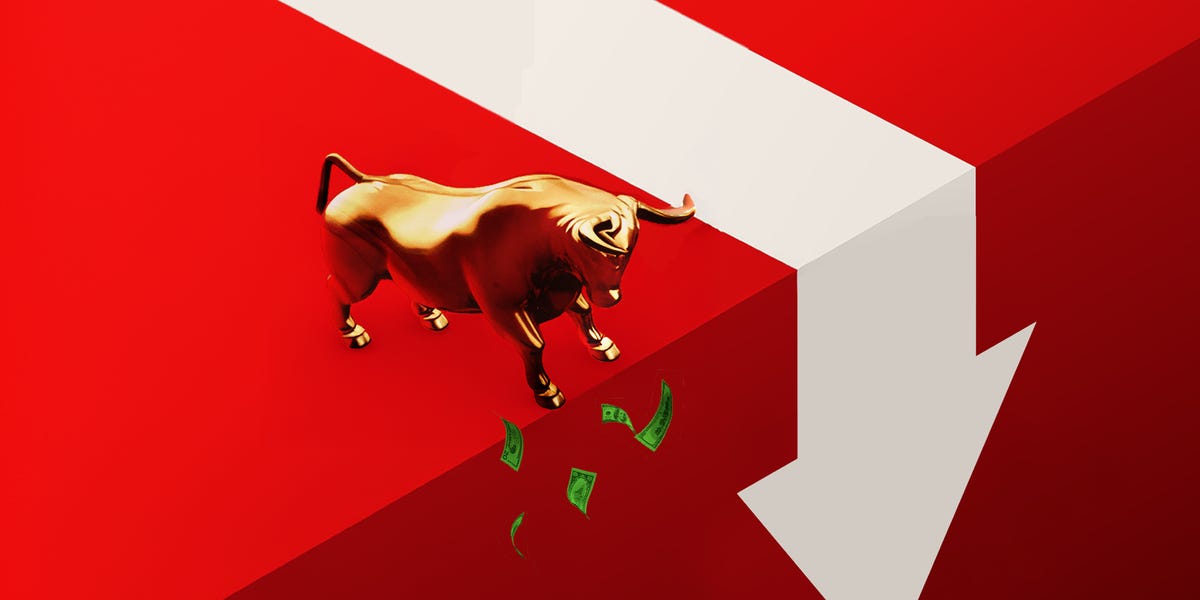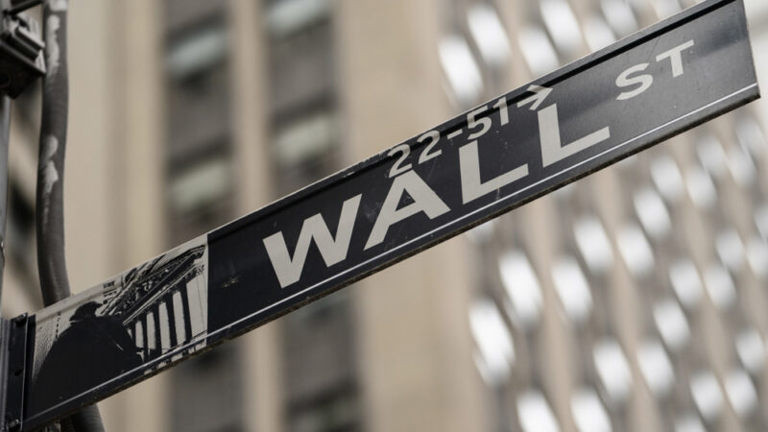The stock market has been able to shake off quite a lot of worrying news lately.
The first two months of 2025 have been solid for investors. Major market indexes have recently hit or approached all-time highs: The S&P 500 hit a record on January 23, while the Nasdaq and Dow Jones averages have been hovering around their peaks. The market’s resilience comes at a time when there is growing uncertainty about the future of the economy. Your daily coffee is still expensive, the housing market is frozen over, political tensions are boiling over, and AI dystopia seems to be all market experts are talking about.
There’s a pretty big reason stocks have held up despite these worrying headlines: Companies, big-time investors, and average Americans are enthusiastic about the future.
For the past few years the US was stuck in a vibecession, as my friend Kyla Scanlon calls it, in which people worry about the economy despite evidence that it’s in great shape. That’s all flipped. As warning signs for stocks and the economy piled up, consumer confidence rose to a three-year high at the end of 2024, driven by optimism about the future. And if that’s not stunning enough, check this chart out.
In July 2022, three months before the S&P 500 kicked off its ongoing rally, stock market pessimism hit a 10-year low. This past November, a record number of respondents in the Conference Board’s survey said they thought the stock market would move higher over the next year. America clearly just went through a collective mood swing, especially when it comes to their investment portfolios. But is this happiness, a genuine mood shift that could sustain the stock rally well into the future? Or mania, a final act of hubris before the market gets its comeuppance?
The answer depends on the mechanics of Wall Street, where market moves depend more on expectations than reality. Measured optimism can be a powerful catalyst for stock prices, but even the best intentions can spiral into overconfidence — and pride often comes before a fall.
The biggest market sell-offs in history were precipitated by economic crises. A catastrophe causes consumers to pull back on spending, company profits drop, executives cull hiring, and stock prices fall. What digs us out of these crises is confidence. Markets wallow in negative headlines until conditions change enough to sow optimism about the future — no matter how slim the hope may be. That’s why over the past five decades we’ve seen the stock market turn higher an average of three months before recessions ended.
Even in less dire times, when it comes to your portfolio, expectations matter as much as — and maybe more than — the news itself. Think of it this way: What would you do if you knew you were about to get punched in the stomach? You’d tense and brace for impact, even if it doesn’t end up hurting as much as you think. Markets work in a similar way. When lots of investors brace for a punch, they tend to discover that the actual punch doesn’t hurt as bad. The opposite is true, too. If you get unexpectedly slugged out of nowhere, you have no time to prepare, and that punch is going to hurt. Generally, the sweet spot for markets is somewhere in the middle: excitement with a healthy dose of skepticism.
There are, thankfully, a slew of confidence and sentiment gauges that can help us determine whether investors are properly calibrated for the risks on the horizon or perhaps getting a little too comfortable. They also serve as a litmus test for what consumers and businesses expect for the future and, ultimately, what they may do with their money.
On the surface, we seem to be in a great spot. The Conference Board’s gauges point to a cheerful American public, which historically is a good sign. Since 1970, when economic confidence has increased over a three-month span, the S&P 500 has climbed by an average of 10% over the following year. Usually, when people feel more confident, the economy — and the stock market — follow suit.
What reversed the vibecession? Well, it’s complicated. Obviously we had a contentious election in November, and you could argue that confidence gauges have been skewed by the anticipation of a pro-growth, America-first administration. Politics are definitely a contributing factor, as they seem to be tinting everybody’s glasses these days, but chalking it up to who’s in the White House doesn’t do the story justice.
First of all, confidence indicators started improving before Donald Trump won the election. The Conference Board economist Stephanie Guichard told me that fewer survey respondents than in 2020 were writing in to say that politics were the reason for their cheeriness.
The survey also suggests that hopes for the future have improved. Guichard told me there’d been a noticeable number of open-ended comments arguing that life feels more affordable. Maybe because, for some, it is. Wages have broadly outpaced inflation for the past 21 months, and more Americans are starting to adjust to what things cost these days.
Another interesting theory is that people are simply becoming more aware of the world around them. It’s never been easier to keep up with the ups and downs of the stock market, and if we see a line move up and to the right, we often believe it can keep going. Data backs this up — over the past two years, 79% of the monthly changes in the Conference Board’s stock market gauge have moved in the same direction as the S&P 500 (versus an average of 55% since 1987). No matter the cause, it’s fair to say that Americans feel increasingly good about the future for legitimate reasons.
The problem, though, could lie in how confident we are.
There is a fine line between confidence and arrogance.
Confidence is a constructive state of trust and certainty. It helps you own the room and control the narrative. Arrogance, on the other hand, is a destructive air of superiority. It sets you up for embarrassment, whispers, and abject failure. It’s the difference between crushing your work presentation and being the butt of office jokes. Given the slim margin between merriness and mania, Wall Street may be dangerously close to tipping over to the wrong side of that line.
In November and December, the stock market seemed to defy gravity. Tech stocks were untouchable. Crypto bros started bragging about their bags. Fartcoin became a thing. The pot has been boiling over for a while now. Take the one-two punch of the Trump meme coin and DeepSeek. On January 17, Trump released $Trump, which jumped to $15 billion in market value in less than 48 hours. Days later, shares of Nvidia — the darling of the AI trade — tanked by an eye-catching 17% after the Chinese AI startup DeepSeek released a model promising function comparable to competitors for a fraction of the cost and energy use.
I can’t help but look at both of these headlines and wonder if they’re part of the same phenomenon. Did we become so confident in the market’s prospects that we lost sight of the hefty risks coming down the pike? You can’t judge a market solely on vibes. But if you don’t think things have been getting a little overheated, you’re not paying attention.
High expectations are where your portfolio can run into trouble. Rising optimism can be constructive until the investing population acts untouchable. Expectations become too lofty as cracks start to form. People look around nervously because they can feel the ground shifting. Then one blow knocks the market off its axis. This pattern has been evident throughout history. Before 2024, the Conference Board’s gauge of stock market confidence reached its highest point in January 2018. That month, the S&P 500 slid by 10% during a violent two-week sell-off.
Its second-highest point was in January 2000, two months before the peak of Wall Street’s most notorious mania — the tech bubble — and a 49% drop in the S&P 500.
Not every surge in optimism has such a dramatic ending, and what doomed the stock market back then isn’t necessarily dooming it now. But there’s one parallel I can’t ignore.
Main Street and Wall Street aren’t just confident; they’re throwing caution to the wind in their portfolios. That makes me doubt the durability of the market if things turn south. Data from the American Association of Individual Investors indicates investors are keeping about 69% of their portfolio in single stocks or stock funds, near the highest level since 2021. And based on Bank of America’s monthly allocation survey, professional money managers are holding their smallest percentage of cash in two decades.
We have plenty of reasons to feel upbeat about the months ahead. Companies are hiring, profits are growing, and people are spending money. The economy’s foundation looks fine, if not slightly cracked from higher unemployment and job market friction. We’re coming off back-to-back 20% years in the S&P 500 after a loud chorus of recession calls. C’mon, we deserve a little fun!
But let’s face it: We’ve been spoiled as investors. And while it’s tough to see a disastrous market crash while the economy is growing, we’ve lost the undercurrent of healthy skepticism that has guided prices higher these past few years.
Be confident, but be intentional about balance in an environment like this.
The punch may be just around the corner.
Callie Cox is the chief market strategist at Ritholtz Wealth Management and the author of OptimistiCallie, a newsletter of Wall Street-quality research for everyday investors. You can view Ritholtz’s disclosures here.


